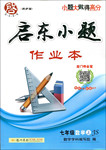题目内容
In 2004,18-year-old Nadal helped Spain win the Davis Cup by defeating (击败) Andy Roddick, who was the second-best American player in the world at the time. This made Nadal the youngest player to win a match for a victorious country in the Davis Cup.
Professional(职业的) tennis is played on courts made of three different materials:clay, glass and hard court. The different surfaces have a significant effect on the game, so much so that for many years few players mastered tennis on all three surfaces. Nadal was called“The king of Clay”because he was so dominant(占优势的) on clay courts. But now he is one of several players to win grand slam titles on all three surfaces.
In 2016, Nadal founded a tennis academy in his hometown,Manacor, Spain. His goal was to combine tennis instruction and education so that young athletes would not need to neglect their education. He intends to live in the area long-term and remain involved with it.
Perhaps Rafael Nadal's incredible career will continue,and he will also make great efforts in passing on his skills and techniques to new prospective athletes.
1.Where is Rafael Nadal from?
A. England B. American C. Spain D. France
2.Which of the following is correct according to the passage?
A. Nadal became the youngest player to win a match the Davis Cup in 2013.
B. A few players mastered tennis on all three surfaces.
C. Nadal was best at playing on clay court.
D. He is the only one to win grand slam titles on all three surfaces.
3.What can we guess from this passage?
A. Rafael Nadal has never founded tennis academies in his hometown.
B. Rafael Nadal decided to live abroad
C. Rafael Nadal is not going to play tennis.
D. Rafael Nadal will work hard to teach young athletes tennis skills.
 黄冈经典趣味课堂系列答案
黄冈经典趣味课堂系列答案 启东小题作业本系列答案
启东小题作业本系列答案
